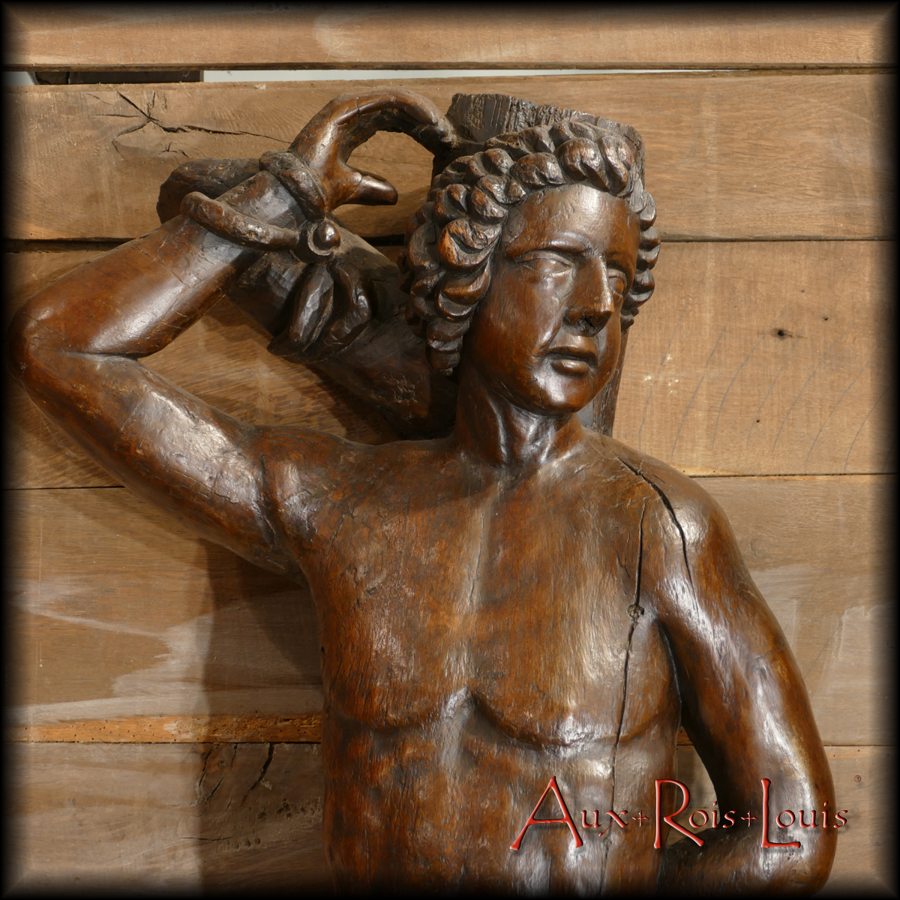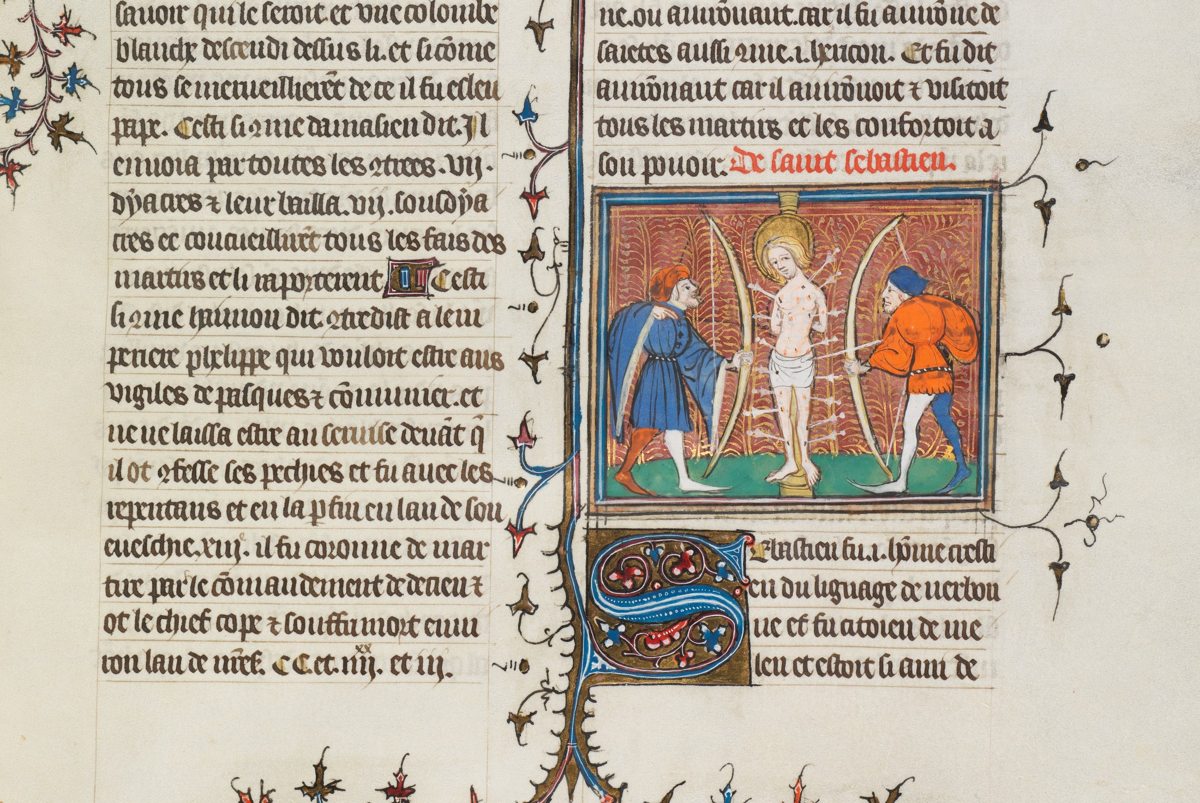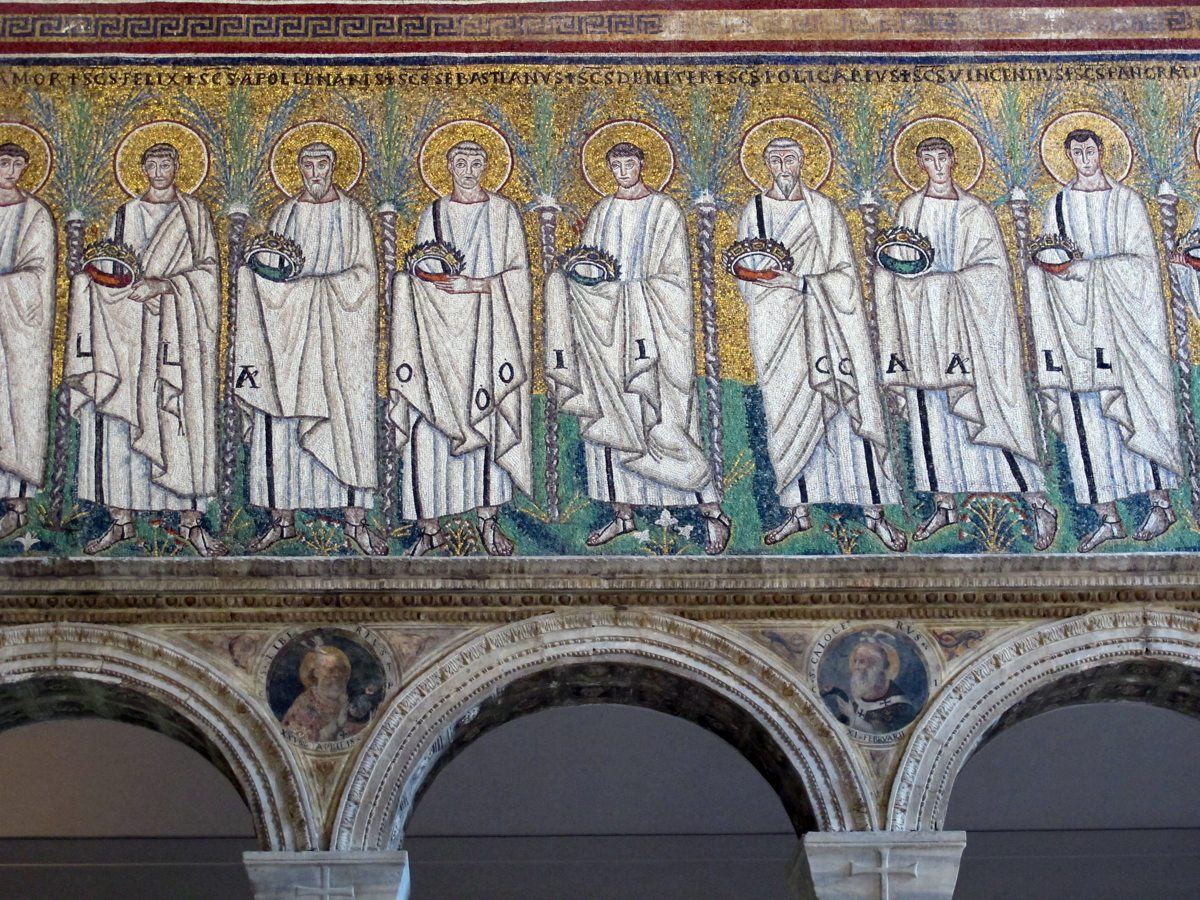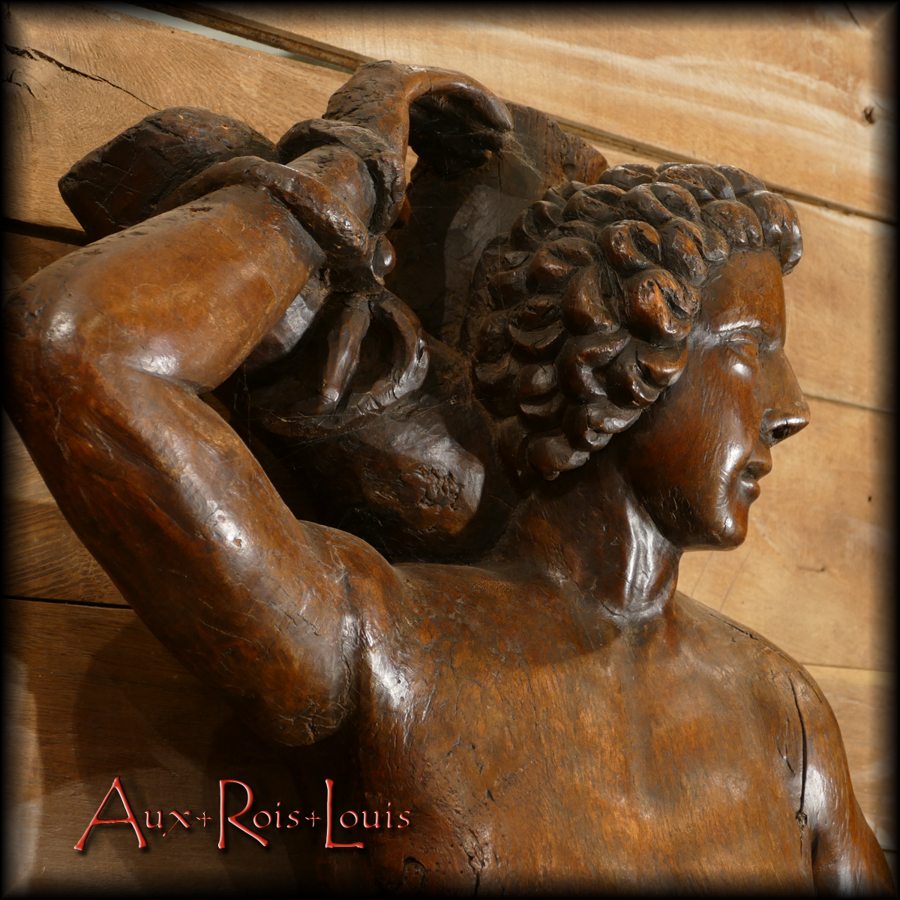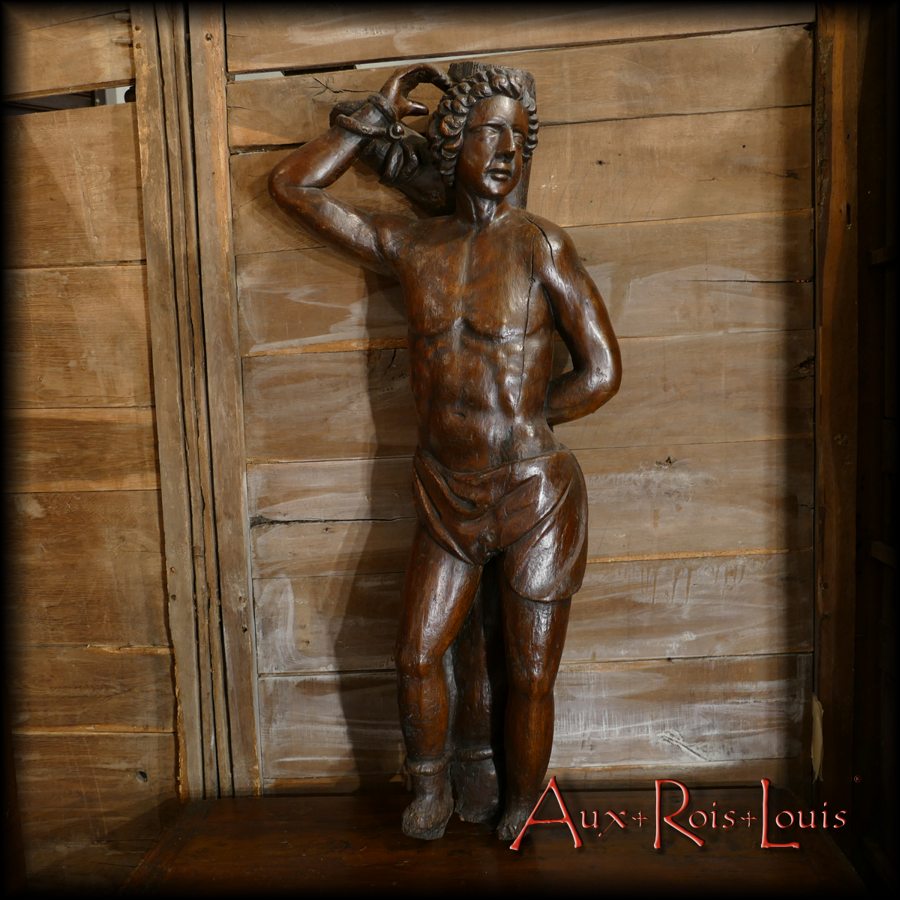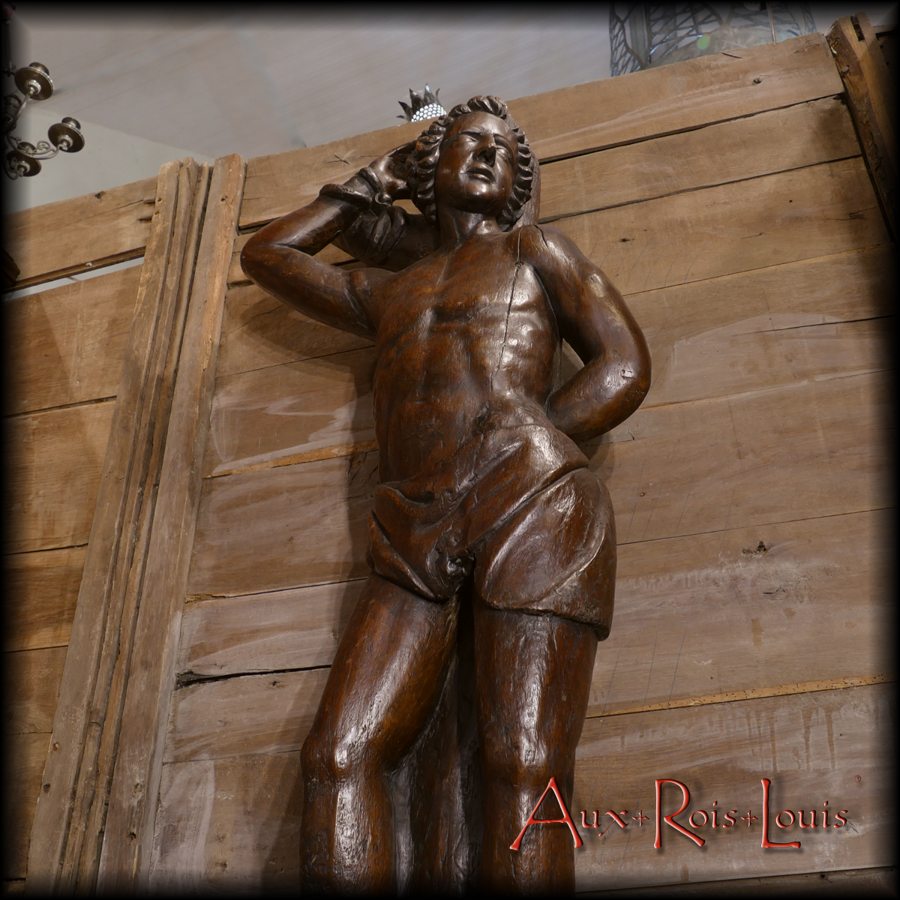Sculpture in anamorphosis of Saint Sebastian – 17ᵗʰ century – South of France
According to the “Légende dorée” (Golden Legend) of the Italian Dominican Jacques de Voragine, the young Sebastian, a fervent Christian persecuted by the pagan Roman Empire, was condemned around “l’an du Seigneur 187” to be pierced with arrows, kept tied to a pole execution.
However, the references to this martyrdom by sagittation did not appear until around the year 1000.
From this account, Saint Sebastian will no longer be represented as a bearded old man with a halo and a laurel wreath, as can be seen on the fresco in the Byzantine basilica of Saint Apollinare in Ravenna made around 527 AD.
It will be shown to the faithful in the suffering of his martyrdom, in the guise of a young man shackled, hands and feet tied, subjected to the violence of the archers. Some of these representations going as far as the so-called “hedgehog” iconography, his body then being entirely encircled with arrows.
Gradually, at the end of the Middle Ages, this vision will notoriously soften.
In the 17th century, in many religious buildings, Saint Sebastian remained tied up while the arrows attached to his legend were no longer represented. At most, they will be suggested.
The Saint Sebastian carved in a hundred-year-old walnut that we present to you here is linked precisely to this movement, this renewal.
In addition, this monoxyl sculpture presents from a stylistic point of view a quite singular attraction.
Intended to be venerated and prayed from the benches of the faithful, this Saint has been expertly sculpted according to the codes of an anamorphic perspective so that the low angle view restores the natural proportions of the character.
From top to bottom, all the measurements go down, which under the effect of the perspective makes it possible to make the reverse: the smaller legs seen close up return to their normal size compared to the head, seen from further away.
Remarkably well preserved, this work perfectly reflects the ecclesiastical artistic canons of the 17th century and deserves to be placed in height to be duly appreciated.
Dimensions
Height: 129 cm, width: 58 cm, depth: 23 cm.
Reference : [ME065]
Item shown as an example. Please contact David on 06 78 92 61 98 if you would like him to offer you similar pieces.


